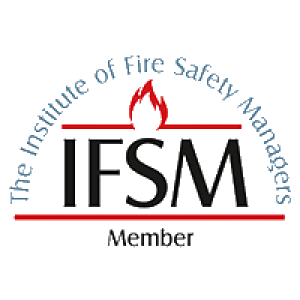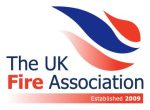- Home
- Services
- Fire Alarm Systems
Fire Alarm Systems
Protect your business with a reliable, BS 5839-compliant fire alarm system.
From installation to maintenance, we ensure your fire detection system meets legal requirements and keeps your property, employees, and customers safe.
Whether you need a new system, servicing, or compliance checks, our experts are here to help.
Watch Video
Fire Alarm Systems to BS:5839
Fire alarms aren’t just about ticking a compliance box—they’re about keeping people safe and protecting your property from fire risks.
A well-designed fire alarm system can make all the difference in an emergency, providing early warning and helping to prevent loss of life and damage to buildings.
The process starts with a fire risk assessment, identifying potential fire hazards and ensuring your building has the right level of fire detection in place.
From there, a competent fire alarm engineer will design a system tailored to your premises, ensuring full compliance with BS 5839-1 and BS 7671.
Once installed, regular maintenance and testing are essential to make sure your fire alarm system is always working as it should.


Who Needs a Fire Alarm System?
Fire alarm systems are essential for a wide range of premises, including:
- Commercial Buildings – Offices, retail stores, and warehouses.
- Public Buildings – Schools, hospitals, care homes, and government buildings.
- Industrial Facilities – Factories, workshops, and storage units.
- Hospitality & Leisure Venues – Hotels, restaurants, cinemas, and theatres.
- Multi-Occupancy Buildings – Apartment complexes, student accommodations, and high-rise buildings.
Fire Alarm System Categories
Under BS 5839-1BS 5839-1 classifies fire alarm systems into different categories based on the level of protection required:
Category M – Manual fire alarm systems where alarms are activated by people via call points.
Category L (Life Protection):
L1 – Maximum coverage, detectors in all areas.
L2 – Detectors in escape routes and high-risk areas.
L3 – Detectors in escape routes and adjacent rooms.
L4 – Detectors in escape routes only.
L5 – Custom systems designed for specific fire risks.
Category P (Property Protection):
P1 – Full building protection with detectors in all areas.
P2 – Detectors only in high-risk areas.
Fire Alarm System Installation & Testing
To ensure compliance with BS 5839-1, fire alarm systems must be:
Designed & Installed Correctly – A thorough fire risk assessment determines the right system for your premises.
Regularly Maintained – Systems should be inspected every six months, by a competent engineer, to ensure reliability.
Tested Weekly – Businesses should conduct a weekly fire alarm test to check system functionality.
Commissioned by a Competent Engineer – A commissioning certificate should be issued upon installation.
Wired & Wireless Fire Alarm System Installation
Fire alarm systems can be installed using either wired or wireless technology, depending on the building’s needs, layout, and specific fire risks.
Both options comply with BS 5839-1 and have their own advantages:
Wired Fire Alarm Systems – Traditional hardwired systems offer reliability and durability. They are ideal for new builds or properties where cabling can be easily installed. These systems require structured wiring but provide a long-term, stable fire detection solution.
Wireless Fire Alarm Systems – Using radio signals to connect detectors, call points, and alarm sounders, wireless systems offer flexibility and minimal disruption during installation. They are particularly useful for historic buildings, listed properties, and sites where running cables is impractical.
Regardless of the system type, professional installation ensures full compliance with BS 5839-1 and BS 7671, guaranteeing that fire alarms are correctly positioned, fully operational, and regularly tested for reliability.
We install and maintain fire alarm systems from a wide range of leading manufacturers, including EMS, C-Tec, FireSafe, Menvier, and more.
Our expertise ensures that your system is set up correctly and maintained to the highest standards.
UK Legal Requirements & Compliance
The Regulatory Reform (Fire Safety) Order 2005 requires that all non-domestic buildings have a suitable fire detection and warning system.
Non-compliance can result in fines, legal action, or business closure.
FIRE ALARM INSTALLATION & maintenance
Need Help with Fire Alarms? Let’s Talk!
Ensure your fire alarm system is safe, compliant, and fully operational.
✔ BS 5839-compliant fire alarm inspections & servicing
✔ Fast, professional support for businesses & landlords
✔ Serving Surrey, Berkshire, Hampshire & Kent
📅 Book your appointment today! Fill out the form, and our experts will be in touch.
Call us on 01276 300 351
FAQ - FREQUENTLY ASKED QUESTIONS
Popular Questions
Ensuring your fire alarm system complies with BS 5839 is essential for protecting lives and property.
In this section, we answer common questions about fire alarm system categories, legal requirements, installation, maintenance, and testing.
Whether you need guidance on selecting the right fire alarm system, understanding routine inspections, or ensuring compliance with fire safety regulations, our FAQs provide expert advice to help keep your premises safe and legally compliant.
General Requirements
BS 5839 is the British Standard that provides guidance on the design, installation, commissioning, and maintenance of fire detection and alarm systems in buildings.
It ensures that fire alarms are effective in detecting and alerting occupants to fires, reducing risks to life and property.
Compliance with BS 5839 is essential for meeting legal and insurance requirements.
In the UK, the Regulatory Reform (Fire Safety) Order 2005 mandates that businesses and landlords conduct fire risk assessments to determine if a fire alarm system is required.
Most commercial buildings, HMOs (Houses in Multiple Occupation), and care homes legally require a fire detection and alarm system.
BS 5839 categorises fire alarm systems based on their purpose:
L (Life Protection) Systems: Installed to protect occupants.
- L1: Maximum coverage with detectors in all areas.
- L2: Detectors in high-risk areas and escape routes.
- L3: Detectors in escape routes and rooms leading to them.
- L4: Detectors only in escape routes.
- L5: Customised system for specific risks.
P (Property Protection) Systems: Installed to protect property and assets.
- P1: Full building protection.
- P2: Partial coverage, only in high-risk areas.
The right system depends on your building type, use, and fire risk assessment.
Your system must be designed, installed, commissioned, and maintained according to BS 5839 standards.
Regular inspections and servicing by a qualified engineer will confirm compliance.
Keeping proper documentation, such as test logs and service records, is also crucial.
The Responsible Person (business owner, employer, landlord, or building manager) is legally responsible for ensuring fire safety compliance, including maintaining a suitable fire alarm system.
Fire risk assessments should determine the necessary safety measures.
Installation & System Types
- Manual systems require a person to activate the alarm using call points.
- Automatic systems detect smoke, heat, or flames and trigger the alarm automatically. Most buildings use a combination of both for maximum safety.
This depends on factors such as building size, layout, and fire risks.
Smoke detectors, heat detectors, beam detectors, and aspirating systems are commonly used.
A professional fire risk assessment can determine the best solution for your needs.
Need help? Call us on 01276 300 351 for advice.
- Conventional fire alarms divide the building into zones, with detectors in each zone. The control panel identifies the zone but not the exact location of a fire.
- Addressable fire alarms assign a unique address to each detector, pinpointing the exact location of a fire.
Addressable systems are recommended for large or complex buildings, whereas conventional systems are suitable for smaller premises.
Fire alarm systems should be reviewed regularly as part of a fire risk assessment. Systems typically last 10-15 years, but upgrades may be needed sooner due to:
- Changes in building layout or usage
- New fire safety regulations
- Frequent false alarms or system faults
Fire alarm systems should be reviewed regularly as part of a fire risk assessment.
Systems typically last 10-15 years, but upgrades may be needed sooner due to:
- Changes in building layout or usage
- New fire safety regulations
- Frequent false alarms or system faults
Testing & Maintenance
- Weekly: A manual test of call points to check functionality.
- Six-Monthly: A full system inspection by a fire alarm engineer.
- Annually: A complete service and test to BS 5839 standards.
A designated person should activate a different manual call point each week, check that the alarm sounds correctly, and record the test in a fire logbook.
Any faults must be reported and fixed immediately.
You should maintain a fire alarm logbook, recording:
- Weekly tests
- Engineer service visits
- Repairs and replacements
- False alarms and corrective actions
These records are essential for compliance and fire safety inspections.
Frequent false alarms can be caused by:
- Incorrect detector placement
- Steam, cooking smoke, or dust near detectors
- Faulty or outdated equipment
A fire alarm engineer can diagnose and resolve the issue. Preventative maintenance also helps reduce false alarms.
You should maintain a fire alarm logbook, recording:
- Weekly tests
- Engineer service visits
- Repairs and replacements
- False alarms and corrective actions
These records are essential for compliance and fire safety inspections.
Emergency Procedures & Compliance
- If no fire is present, check the control panel for the activated detector or call point.
- Silence and reset the alarm if safe to do so.
- Investigate the cause and record the incident in the fire logbook.
- If false alarms persist, arrange a system check with a fire alarm engineer.
A fire safety inspector may issue an Enforcement Notice, requiring corrective action within a specified timeframe.
In serious cases, non-compliance can lead to fines or business closure.
BS 5839 recommends integrating fire alarms with emergency lighting, sprinkler systems, and automatic door releases to ensure a coordinated fire response.
A fire safety consultant can advise on proper integration.
Yes. Fire alarm monitoring services alert a remote centre, which can notify emergency services if the alarm activates, providing 24/7 protection.
This is highly recommended for high-risk premises.
Non-compliance with fire safety laws can result in:
- Fines up to £5,000 for minor breaches
- Unlimited fines and up to 2 years in prison for serious offences
- Legal liability if a fire causes injury or death
Ensuring your fire alarm system meets BS 5839 standards is essential for safety and legal compliance.
Need more help? Let's Schedule An Appointment
Got questions about electrical safety, fire alarms, or compliance testing? Let’s chat!
✅ Expert advice on EICRs, PAT Testing, Fire Alarms & More
✅ Flexible appointment times to suit your schedule
✅ Qualified professionals serving Surrey, Berkshire, Hampshire & Kent
Simply fill out the form below, and one of our specialists will contact you to book a consultation at a time that works for you.
📅 On-Site & Remote Appointments Available
📍 Serving Businesses, Landlords & Property Managers
Let’s make your property safe, compliant, and risk-free – Book your appointment today!
Let's talk..
Fill out the form below, and one of our electrical and fire safety specialists will get back to you as soon as possible.
📞 Prefer to speak to us directly? Call us at 01276 300 351
📧 Or email us at office@esielectrical.co.uk
We aim to respond to all inquiries within 24 hours.








